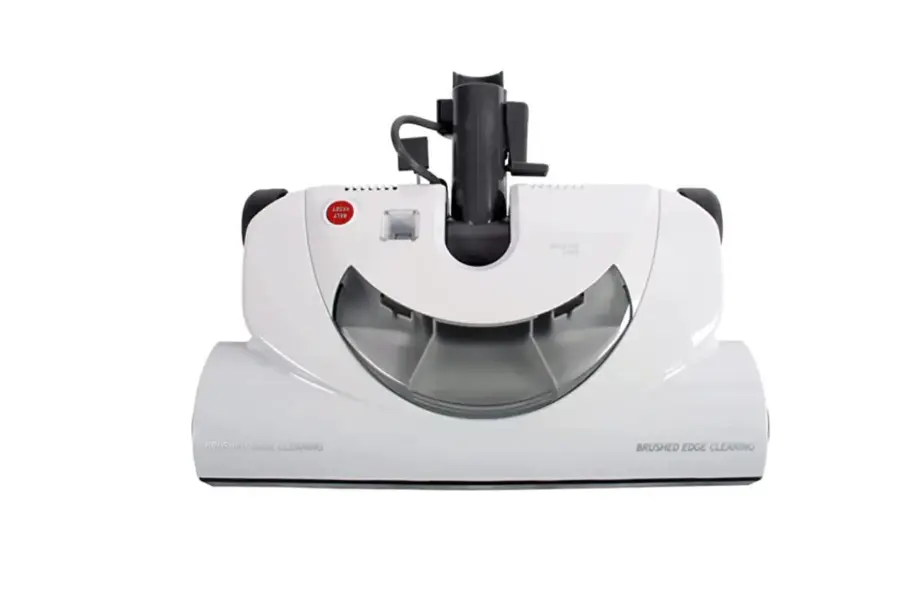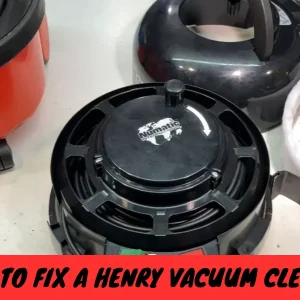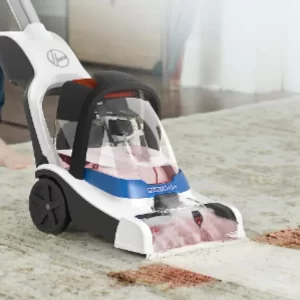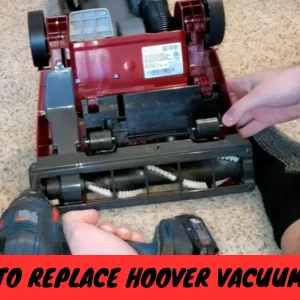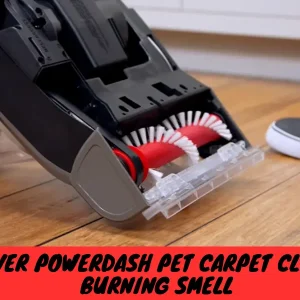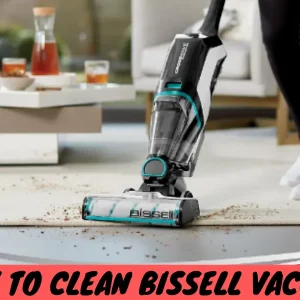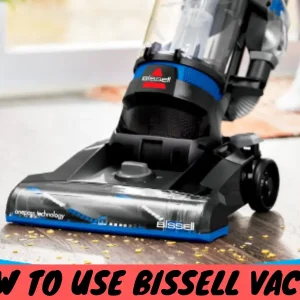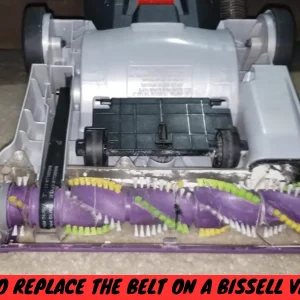“Discover expert tips on how to fix central vacuum system. Say goodbye to cleaning woes and enjoy a smoothly running system.“
How to Fix Central Vacuum System
To fix central vacuum system follow these steps
- Inspect the hoses and attachments.
- Check the motor for any issues.
- Ensure to examine and clean the filters.
- Look for any leaks and give the central unit a thorough cleaning.
- Perform system testing to ensure everything is functioning correctly.
Is the central vacuum faulty? Are you sick and tired of subpar operation and decreased suction power? Don’t worry, because in this comprehensive guide we’ll guide you through every step of the repair process to get your central vacuum system back to optimal operation. Let’s dive into the world of central vacuum system troubleshooting and repair and say goodbye to dusty corners and ineffective cleaning. In this article I will show you how to Fix Central Vacuum System.
Table of Contents
- How to Fix Central Vacuum System
- Relevant Article
- Understanding Central Vacuum Systems
- Identifying Common Issues
- Step-by-Step How to Fix Central Vacuum System
- How to maintain a central vacuum system
- How to replace a central vacuum unit
- How to repair a central vacuum system
- How to clean a beam central vacuum system
- How to fix central vacuum wall inlet
- Central Vacuum System Not Working Properly – How to Fix it!
- Conclusion: How to fix central vacuum cleaner
- FAQs
Relevant Article
- How to choose a central vacuum system
- How to install a central vacuum system
- How to maintain a central vacuum system
- How to remove a central vacuum system in your home
Understanding Central Vacuum Systems
Let’s build a strong foundation by understanding how central vacuum systems work before we dive into the troubleshooting process. These systems work by moving dirt, dust and other debris from different areas of your home to a collection point, usually located in the basement or garage. It enables thorough cleaning. Thanks to their well-thought-out installation, central vacuum systems offer greater suction power and better control of allergens than conventional portable vacuum cleaners. So let’s start with how to fix central vacuum system.
Identifying Common Issues
- Loss of Suction Power: One of the most common problems is a sudden decrease in suction power. This can be caused by obstructions, clogs or a faulty motor. Start by inspecting hoses, pipelines and attachments to identify the root cause. Remove any dirt and debris that may obstruct proper airflow.
- Strange Noises: Unusual noises coming from your central vacuum system may stem from a loose or damaged component. Check the motor, filter and hoses for any signs of wear and tear. To eliminate noise, secure any loose parts and replace any damaged components.
- Uneven Cleaning: If your system is not thoroughly cleaned or is left with dirt and debris, it is possible for pipes or hoses to become clogged. To ensure comprehensive cleanliness in your home, clean these parts carefully.
Step-by-Step How to Fix Central Vacuum System
Check Hoses and Attachments
Start by inspecting the hoses and attachments for any blockages. Unscrew the hose from both ends and use a long, flexible brush to remove any debris. Check each attachment for possible obstructions and clean them as needed.
Inspect the Filters
Maintaining peak efficiency in your central vacuum system requires proper filter care. Depending on the model, you may have different types of filters such as foam, cartridge or disposable filters. Follow the manufacturer’s instructions to take out the filters and clean or replace them accordingly.
Examine the Motor
Check closely if the motor in your system is not working as expected or if it is making unusual noises. Make sure motor connections are secure and tighten any loose components. If the motor still does not operate properly, seek assistance from a qualified technician.
Clear Central Unit
The central unit, often located in the basement or garage, acts as the brain of your central vacuum system. Check it for any obstructions or clogs and carefully remove any debris or dirt that could affect suction power.
Check for Leaks
Inspect hoses and pipelines for any noticeable leaks or cracks. Leaks significantly affect the performance of your system. To prevent air loss and maintain optimal suction power, replace damaged components.
Test the System
Once you have completed the previously mentioned steps, reassemble the system and test it. Monitor both overall performance and suction power. If problems persist, it may be necessary to contact a specialist for a more comprehensive inspection and repair.
How to maintain a central vacuum system
How to maintain a central vacuum system? It is important to regularly clean the vacuum canister, vacuum lines, and vacuum inlets. To ensure that the vacuum motor is functioning properly, it should be checked regularly.
In recent years, central vacuum systems have become increasingly popular in homes across the country. With more wear and tear on the system, it is important to take care of your central vacuum system to ensure it lasts a long time and is not damaged. Here is the main post on how to maintain a central vacuum system you can check.
Vacuum is an electronic device that can have problems. If it has problems, you need to know how to fix central vacuum system.
How to replace a central vacuum unit
How to replace a central vacuum unit? Central vacuum systems provide a cleaner home with less hassle. If you are a homeowner, you want a contractor who will install your system correctly the first time. For the best central vacuum installation service in town, you need to contact a professional.
Unfortunately, most people don’t know how to replace a central vacuum unit. The first step is to disconnect the power. The next step is to remove the old unit. The final step is to install the new unit.
It may be necessary to replace your central vacuum unit if it is not working properly. To do this, you will need to purchase a new unit and install it. The first step is to turn off the power to the unit. Next, you will need to remove the old unit.
It is possible to remove the unit from the mount by disconnecting it from the power source. After removing the old unit, you can install the new one.. To do this, you will need to connect the new unit to the power source and then mount it in the same location as the old unit.
If your vacuum have problem then you need to know how fix central vacuum system.
How to repair a central vacuum system
How to repair a central vacuum system? Hiring the wrong person to do this job can be a costly mistake. Follow these steps to have your central vacuum system repaired by the right person. How to fix central vacuum system
- Find out what the problem is with your central vacuum system. Common issues include loss of suction, clogs in the hose or tubing, or a malfunctioning motor.
- Research local repair technicians or companies that specialize in central vacuum systems. Make sure they have a good track record by reading reviews and customer testimonials.
- Describe the problem you are experiencing with your central vacuum system to the repair technician or company. Provide them with the make and model of your system, as well as any other relevant information.
- Schedule an appointment for the technician to come to your home and assess the problem. The technician will diagnose the problem and provide you with a quote.
- Ensure that the system is working properly after the repair is complete. If you have any additional issues, contact the technician or company to schedule a follow-up visit.
For troubleshooting, please refer to the manufacturer’s manual and contact the manufacturer if the warranty is still active.
You can try a few things how to fix central vacuum system that isn’t working properly. First, check to see if there is anything blocking the vacuum head or hose. If there is, remove it and see if the vacuum starts working properly. It is replace it and see if the vacuum starts working properly. In that case, you may need to hire a professional to come and repair your central vacuum system.
You can read more about, How to remove a central vacuum system in your home and also you need to know how to fix central vacuum system
How to clean a beam central vacuum system
How to clean a beam central vacuum system? Beams central vacuum systems are a great way to save space when you have a small house. When you have more space to work with, they can also be really fun to use. The only downside is that they are very difficult to clean.
If you have a Beam central vacuum system, unplug the power unit first. Then, using a soft brush attachment, vacuum the outside of the power unit. Next, remove the vacuum hose from the power unit and use the soft brush attachment to vacuum the inside of the power unit. Finally, vacuum the inside of the power unit with the power unit turned off.
If you have a central vacuum then you need to know how to fix central vacuum system and also you needvto know how to install a central vacuum system in your home
How to fix central vacuum wall inlet
How to fix central vacuum wall inlet? Seal the wall inlet properly to prevent outside air from entering the central vacuum system.This can cause the vacuum to run inefficiently, resulting in more time wasted. Ensure the wall inlet is properly sealed and the central vacuum system is running efficiently by taking a few steps.
- The first step is to turn off the central vacuum system.
- Locate the wall inlet that needs to be repaired.
- If the problem is a loose or disconnected hose, reattach the hose to the inlet.
- Replace the inlet if it is loose or damaged.
- Remove the valve inside the inlet and replace it with a new one if the problem is with it.
- Finally, test the inlet to make sure it is working properly before turning the power back on.
If you want then you need to know How to maintain a central vacuum system and also you know How to fix central vacuum system
Central Vacuum System Not Working Properly – How to Fix it!
Conclusion: How to fix central vacuum cleaner
Your central vacuum system plays an important role in maintaining a clean and healthy living environment. By following this comprehensive guide, you’ll gain the knowledge and skills you need to recognize and solve common problems. Remember that a well-maintained central vacuum system can provide years of efficient cleaning and allergen control for your home.
FAQs
Check the hose and tubing for any clogs or blockages. Inspect the filter and dustbin to ensure they’re not full. If the issue persists, the motor might be faulty, and you should contact a professional for repairs.
Reduced suction can result from various factors. Begin by checking the vacuum bag or canister for fullness and emptying it if necessary. Also, inspect the filters and clean or replace them as recommended by the manufacturer. Blockages in the hose, tubing, or attachments can also cause reduced suction. Remove any obstructions carefully. If the issue persists, there could be a clog deeper in the system that might require professional attention.
Unusual noises could indicate a problem with the motor, bearings, or a loose component. Turn off the vacuum and visually inspect the brush roller, motor, and other moving parts for any foreign objects or damage. If the noise persists, the motor or other internal components might be damaged, and it’s advisable to consult a professional for repair.
An unpleasant odor might result from a clogged filter, a full vacuum bag or canister, or debris stuck in the tubing. Start by emptying or replacing the bag/canister and cleaning or replacing the filters. Check for any obstructions in the tubing, and if necessary, run the vacuum without a bag or filter for a short time to help clear any trapped odors. If the issue continues, there might be a more serious problem that requires professional attention.
